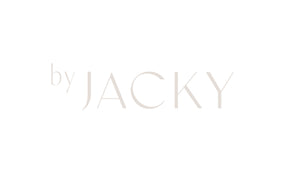STORIES - Carat, not just a number

Gold has been a symbol of luxury, value and beauty for centuries. But if you've ever shopped for gold jewellery, you've probably come across different designations: 14 carat, 18 carat ... maybe even 9 carat. What exactly do these numbers mean? And why is 9 carat not considered ‘real gold’ in the Netherlands?
What does carat mean in gold?
The carat content (abbreviated as K or kt) indicates how much pure gold there is in an alloy. This is because pure gold is too soft to wear as jewellery, so it is mixed with other metals such as silver, copper or palladium to make it stronger. So the number of carats indicates how many parts are made of pure gold:
- 24K gold = 99.9% pure gold
- 22K gold = 91.67% gold + 5% copper + 2% silver + 0.5-1% zinc or other metals
- 18K gold = 75% pure gold + 12.5% copper + 12.5% silver
- 14K gold = 58.5% pure gold + 20% copper + 21.5% silver
- 9K gold = 37.5% pure gold + 42.5% copper + 20% silver
24 carats
24 carat gold is the purest and is often seen in traditional Asian and Arabic jewellery. But because it is so soft, it is not suitable for everyday use, scratching and bending too quickly. In Europe, this is why you hardly see 24K in jewellery.
22 carats
22-carat gold is called a high gold content and is therefore good for investors. It is less used in Western European jewellery, but it is widely used in wedding jewellery in the Middle East, India, Pakistan, ... . It is softer than 14K or 18K which therefore makes it less ideal for everyday use, as it can get scratched and bend quickly.
18 carat
18 carat gold (75% pure) is a favourite for more luxurious jewellery. It is sturdy enough for everyday use. Many high-end jewellery brands choose 18K because it offers the perfect balance between beauty, value and wearability.
14 carat
14 carat gold contains 58.5% pure gold and is harder than 18K. It is popular because of its good value for money. The colour is slightly less intense yellow than 18K, but it is firmer and more wear-resistant, ideal for jewellery you want to wear every day.
9 carat
Although 9 carat (37.5% pure gold) is sold as gold in countries like the UK or Germany, it is not allowed in the Netherlands. In the Netherlands, the law states that an alloy can only be called ‘gold’ if it is at least 14 carat (58.5%).
Why?
The idea behind this law is that the proportion of pure gold at 9K is so low that it is not actually worthy of the name ‘gold’. The risk of discolouration and allergic reactions is higher due to the high percentage of other metals. Moreover, visually, it can quickly lose the luster of real gold.
Quality over quantity
Gold is not just any metal, it never loses its value making it always a smart investment. At byJACKY, we only sell 14K and 18K because we like to offer high-quality full jewellery that is suitable for everyday use and perfect for passing on to the next generation. Look at our collection and see which piece of jewellery is going to be your new smart investment.



